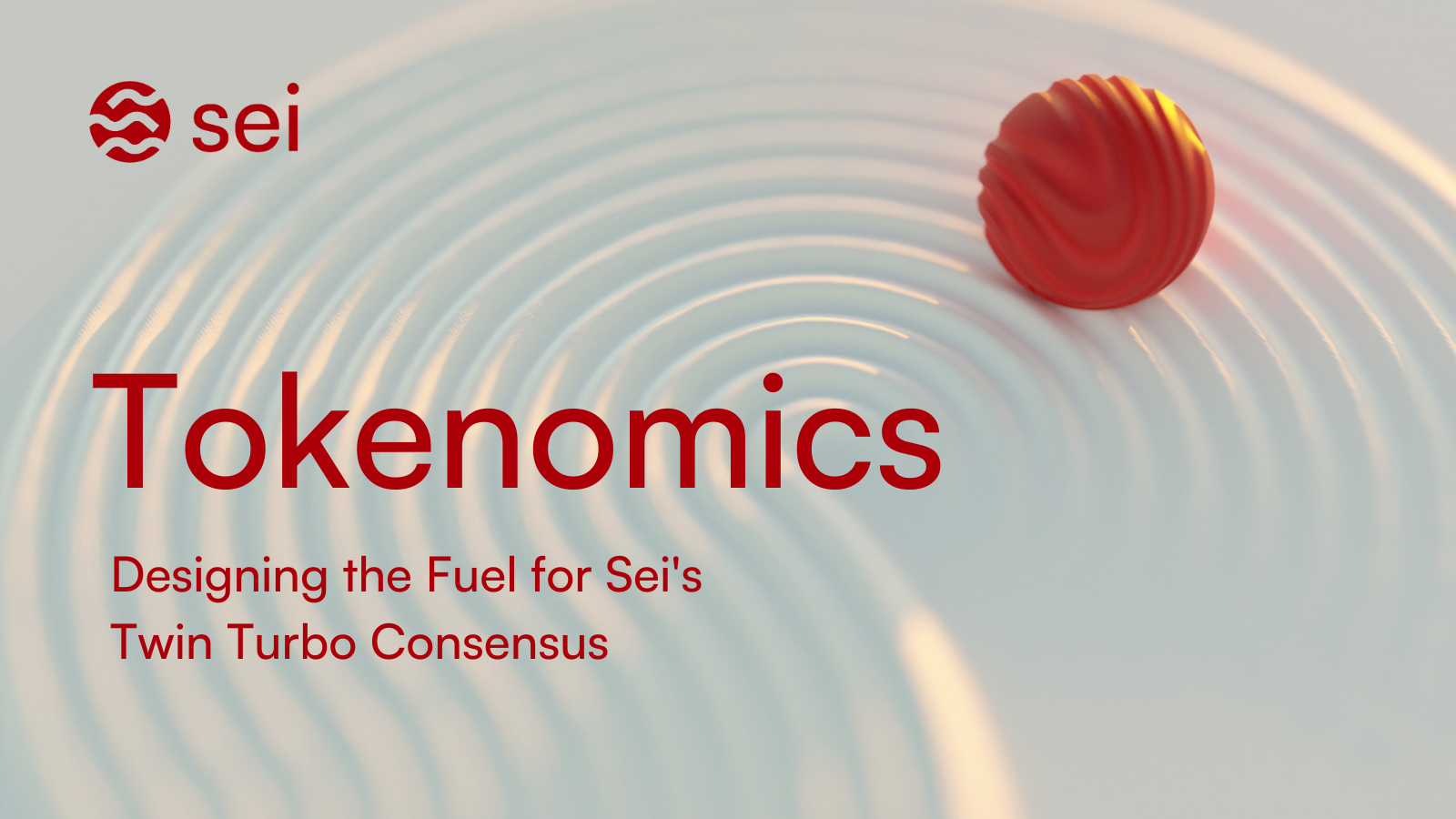Sei’s Future-Proofed Tokenomics

Setting the Scene
Sei is an open-source, permissionless Layer 1 blockchain, specifically designed in response to the fundamental use case of blockchains, the ability to exchange digital assets. As digital assets - from NFTs and Gaming assets to DeFi - continue to grow, so too does the demand for highly performant blockchains. Answering this call, Sei is tailored to be the ideal destination for high-performance, top user experience applications in Web3.
With this in mind, Sei has been built with an emphasis on speed, performance, and technological innovation. It boasts among the fastest time to finality of any blockchain, potentially higher throughput than the theoretical maximum of any Rollup built on Ethereum, and low-latency, all thanks to its use of cutting-edge technologies. These include parallel processing, instant block finality, and novel mechanisms for efficient block propagation and processing.
Going a step further, Sei provides the infrastructure making it possible for anyone with internet access to interact with Web3 applications, at a speed faster than a blink. Therefore, Sei not only facilitates efficiency, but it unlocks an entirely new class of Web3 application.
The Importance of Token Distribution
In an open-source global blockchain network, token holders are the lifeblood of decentralization. Tokens represent governance and participation rights within the network, making token holders intrinsic to the network's functionality. Their importance extends beyond merely holding tokens; they actively participate in consensus mechanisms, governance decisions, and even network improvements. This active involvement helps to ensures that no single entity can dominate the network, preventing the risk of centralization that can undermine the foundational principles of blockchain.
Decentralized token holders are the driving force behind the success and resilience of open-source global blockchain networks. Their contributions span security, governance, innovation, and inclusivity. By embracing the principles of decentralization and actively participating in the network's evolution, these ecosystem participants ensure the long-term viability of blockchain technology. In a world where trust and transparency are becoming increasingly paramount, the role of decentralized token holders paves the way for a more democratic, secure, and globally accessible future.
The SEI Token
Sei operates as a decentralized “Proof of Stake” blockchain, powered by the SEI token. The SEI token serves several functions on the network:
- Network Fees: Pay for transaction fees on the Sei blockchain.
- DPoS Validator Staking: SEI holders have the option to delegate their holdings with validators or stake SEI to run their own validator to secure the network.
- Governance: SEI holders can engage in future governance of the protocol.
- Native Collateral: SEI can be used as native asset liquidity or collateral to applications built on the Sei blockchain.
- Fee markets: Users can pay a tip to validators to get their transactions prioritized, which can be shared with users that are delegating to that validator.
- Trading Fees: SEI can be used as fees for exchanges built on Sei blockchain.
The total supply of SEI is capped at 10 billion tokens, with the majority being allocated to the community and projects building on Sei as follows:
Community Tokens:
The majority of SEI tokens (51%) have been allocated to the community as follows.
Ecosystem Reserve - 48%
A significant proportion of the SEI token supply is allocated to Ecosystem Reserve. This encompasses the following:
- Staking Rewards
As part of Sei’s decentralized proof of stake mechanism, validators are responsible for securing the Sei blockchain and ensuring its accuracy. Validators run programs called full nodes which allow them to verify each transaction made on the Sei network. Validators propose blocks, vote on their validity, and add each new block to the chain. Users can stake their Sei to validators and receive staking rewards, while validators themselves can set a fee to be compensated for their important role. Validators also play an important role in the governance of the Sei protocol.
- Ecosystem Initiatives
SEI tokens will be distributed via grants and incentives to contributors, builders, validators, and other network participants contributing to or building meaningfully on Sei.
Some of these tokens have already been allocated to projects building on Sei and will be granted upon the completion of certain milestones.
- Sei Airdrops and Incentives:
A portion of the SEI supply is allocated to airdrops, incentivized testnet rewards, and ongoing programs designed to rapidly distribute SEI into the hands of its users and community.
These SEI Airdrops and Incentives are designed to reward the real, active and pioneering users in the crypto space. Three percent of the SEI token supply has been allocated to the first rewards pool, referred to as “Season 1”.
Foundation Treasury - 9%
A portion of SEI tokens are allocated to ongoing operations of the Sei Foundation.
Launchpool - 3%
Note: There is no airdrop of SEI outside the SEI domain. There is no “ICO” or “community sale” of SEI.
Sei’s Community
The above chart represents the SEI token allocation at Mainnet launch. This may evolve in accordance with community governance.
Closing thoughts
With Sei, every known application of blockchain technology can now reach unprecedented scale. The Sei Foundation is excited to see the applications of the future being built and deployed on Sei’s permissionless infrastructure layer, starting with the Pacific-1 Mainnet launch.
For those looking to learn more, you can read the original whitepaper here.

